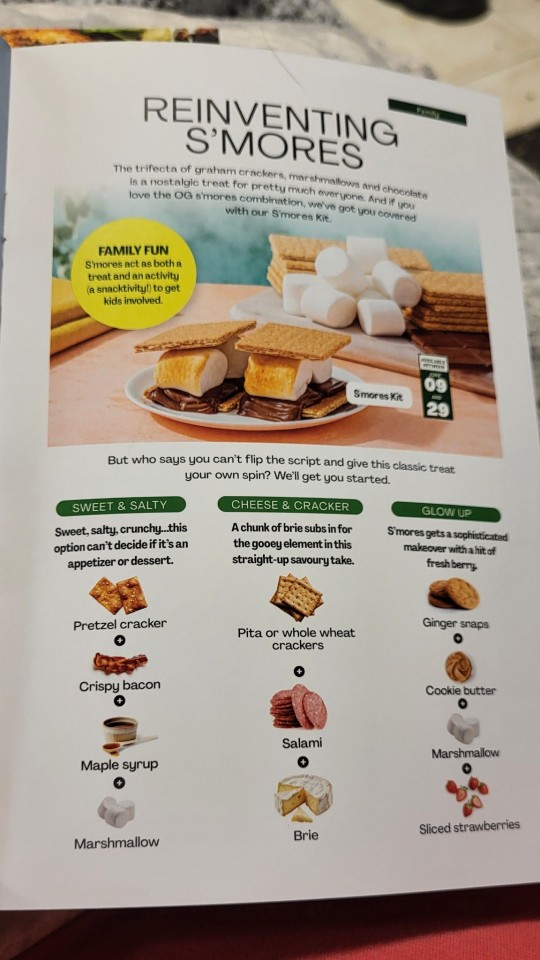critter0139
120K posts
anti racism, anti sexism, anti ableism. no minors allowed
Don't wanna be here? Send us removal request.
Text
hey moving was incredibly expensive with many unexpected costs that came up. because of that, my wife and i are struggling to afford food and necessities and will not have enough for our rent ($998) and various bills (~$200) either.



i'm disabled and unemployed, and my wife has a minimum wage job dependent on tips. she's also been struggling with debt and overdraft fees since last year, so any paycheck becomes halved or is even completely eaten by that. she estimates she'd need about $500 to even begin fixing the damage that OVER A YEAR of very aggressive fees have done.
it's been so discouraging for her to not get the help she needs, it's been so detrimental to her mental and physical health. i try to ease the burden however i can by paying for groceries and more, but i am scraping by on my dwindling savings, which is dangerous due to the unpredictable health issues i experience.
neither of us will survive becoming homeless. we've been displaced and kicked out of and got chased down for money by every other place we've stayed.
please, for pride month and disability pride month and beyond, consider supporting a disabled easian lesbian and her trans wife, to keep us safe and fed and housed.
please help me contribute what i can to rent and bills and to buy us groceries and other necessities: ppal | vm | ca | ko-fi
please help my wife successfully climb out of the red as soon as possible: ppal | vm | ca
anything helps, any support means a great deal, and i'm really grateful to everyone that shows up for us!! thank you.
154 notes
·
View notes
Text
i don’t know how to explain to you people that no matter what a country’s government is like i do not and will not support the US indiscriminately bombing that country’s civilians and i don’t know why that’s a controversial take tbh
55K notes
·
View notes
Text
The First Minister has apologised to Scotland’s Gypsy, Roma, and Traveller Community for our role in the ‘Tinker Experiment’.
The Tinker Experiment happened pre-devolution between 1940-80, before Scotland regained its parliament, but Scottish councils and the Church of Scotland supported the UK Government and its attempted to forcefully integrate the GRT Community into mainstream society by threatening to remove children from their care.
842 notes
·
View notes
Text

Mark Rothko, Untitled, 1969
Acrylic on wove paper
75 7/8 x 48 in. (192.7 x 121.9 cm) Estate/Inventory Number 2103.69 Collection of Kate Rothko Prizel.
© Kate Rothko Prizel and Christopher Rothko
An Alternate scan here, which is modern but not the highest resolution. In fairness, it may be the photographic apprehension of some of the paper works may be deceiving, as a few were painted on a hard wall and not trimmed for mounting, as Rothko would have done during his life. This means that before he starts using masking tape to paint on paper, he's tacking these to a wall and the spatters and fraying on the edges are still present and a little hard to "read" .
But the reason for this scan is how blue it is. Normally, we see an old scan and call it comparatively "Bad" as resolutions are so much better now or the bad scan is a result of a lack of care in presentation.
Both scans we have here however, are from reputable museum sources. The light just hit the paintings differently from lens to lens.
The blue or green cast is not a new thing for Rothko archival photos. We see the aubergine tones come through the chapel paintings it's an eggplant color by name but Rothko called it "Plum" and is the result of (probably) Alizarin Crimson mixed with black and glue and thinned.
However, in the well done, but older Rothko family archives, there's a blue-green effect in many of the black dominated paintings. At any rate compare this version with the other here
112 notes
·
View notes
Text
Cis people be like im not transphobic but my partner just told me shes trans and i feel betrayed and gross and manipulated, like obviously shes a woman but why wouldn't she disclose her entire medical history i mean shes biologically male so it was basically rape
Fuck that reddit post so much holy shit
3K notes
·
View notes
Text
Stolen from reddit where it wasn't being properly appreciated
23K notes
·
View notes
Text
Dinosaurs! – A Fun-Filled Trip Back in Time! (1987) [VHS]
youtube
18 notes
·
View notes
Text
pondering some stuff on refrigeration. (just woke up and have to go straight to work [on what was supposed to be my one day off], so couldn't round-up all the other good stuff on refrigerated ocean liners and bananas/fruit, maritime shipping, canal in Panama, and other turn-of-the-century US plantation interests in Latin America. sorry. go check out some images of United Fruit Company print advertisements for luxury leisure cruise tours in the Caribbean aboard their Great White Fleet circa 1915 to 1930.)
-
-
-
It took a lot of effort to get ice around the globe. […] This guy Frederic Tudor, he basically dominates the American ice trade across the nineteenth century. He develops technologies for insulating ice in the hulls of ships […]. So he’s harvesting pond water from the American northeast in Massachusetts and Maine. Typically, he’s using sawdust as just a byproduct of the Maine lumber industry […].
The majority of the ice trade goes to cool down sweltering British colonialists who are in Bombay and Calcutta and really desiring a nice cold drink. Speculative shipments go off to South America, to the Caribbean, to the American South. [...] But what really blows my mind about these particular shipments and these journeys is that you kind of think that they would be going through all of this effort to preserve something, right? To keep maybe a particular product cold and fresh on the way across. No. They were going there to make cocktails. […] So basically, it’s arriving speculatively. […] Tudor, when he first came up with this business idea, he was trying to send it down to places in the Caribbean, particularly Cuba. And sending it to, like, bars and saloons to be served. [...] So he had to bribe bartenders to automatically start putting it in peoples’ drinks [...]. So we have these ideas that, like, it’s inherently refreshing to have these things, but it was actually a learned social practice [...]. [T]he consumption of cold, alcoholic drinks really got attached to ideas of leisure and implicity, and adversely, race and labor. [...]
So ice kind of shows up to this particular social landscape of elite businessmen […]. So ice becomes shipped to Hawai’i in the 1850s and 1860s. […] And not very much time later, freezing and refrigeration technology starts to emerge. […] And then we’ve got these Western ideas of coldness and purity and refreshment. And so we have Native Hawaiian foods that are sour and salty. Room temperature kinds of things. And then we’ve got these Western prized tastes that are sweet and cold […]. We have annexation in 1898. A bunch of American military backed businessmen depose the queen in 1893 […]. And with annexation came the importation of a lot of American legal frameworks […]. So in 1906, we have the Wylie Act, which is the Pure Food and Drug Act, which essentially aimed at regulating product labeling […] in terms of ideas of purity, quality. Right? [...] [T]he US kind of had a little checklist of, “Is it ice cream? Is it not ice cream?” [...] [or] clos[ing] down all of the poi vendors in Honolulu [...]. One place that you can really track changing tastes is through institutions, right? Hospitals, schools, training centers, whatever it is that has a kind of food program, you can look at what's on the menu [...].
Words above from Hi’ilei Julia Kawehipuaakahaopulani Hobart. As interviewed by Jonathan Van Ness. “What’s The Cold, Hard Truth About Ice in Hawai’i? with Hi’ilei Julia Kawehipuaakahaopulani Hobart.” An episode of Getting Curious with Jonathan Van Ness. 7 December 2022.
-
-
-
Fencing became a primary mode of seizure of […] land and resources for the benefit of individual ranching enterprises in the West. […] Estimates are that 100,000 bovine animals roamed Texas by 1830. Three decades later, on the eve of the Civil War, that number had increased to an estimated 3.5-5 million. […] In the boom years of the 1870s and 1880s, the cattle barons enjoyed “near hegemony” […]. Thus, part and parcel of the American colonial project was this type of land acquisition […]. As the railroads began to extend and connect to rural outposts in the Plains states, entrepreneurs in the new cow towns such as Abilene, Kansas, sought out Texas livestock trails […]. The most-well-known [...] [f]rom 1867 until 1871, the 1,000-mile-long Chisholm Trail was the main livestock trail from Texas, a trail that ran from San Antonio […] and ended at Abilene. […] They collectively drove 600,000-700,000 [cows] north from Texas during 1871 alone, all eventually bound for abattoirs in St. Louis and Chicago. […]
Infrastructural and technological developments at towns such as Abilene […] also represent a singularly important carceral phenomenon of the nineteenth-century United States innovations in transportation, specifically, the “cattle car” (and by 1869, the refrigerated car that hauled dead animal carcasses) […].
It was primarily British companies that played a major role in developing the transcontinental railroad in the 1870s and 1880s [...] and who eventually also shipped refrigerated cow carcasses to Britain in ocean steamers. […]
Railroad development actually included an array of ancillary infrastructural developments [��] - railroad stations with telegraph facilities, supervisory personnel, and company-owned […] stockyards. […] The first twenty-car shipment of cows from Abilene to Chicago was in September of 1867. […] This north-south cattle complex expanded in the 1870s, as the demand for beef, tallow, and hides greatly expanded amid postwar [conditions]. Concomitantly, one of the most significant instruments […] was the revolutionary invention of wire fencing […]. Netz argues for the critical importance […] [of] the case of barbed wire [in] the violent enclosure […] during colonization of the American West. [J.G.] patented barbed wire in 1874 and opened a small manufacturing plant in DeKalb, Illinois, for its production, with large-scale production and sale eventually located to […] Massachusetts. More than 350 barbed wire patents were issued between 1875 and 1890, although it was the [J.G.] patent that came to monopolize the market […]. One rather infamous early adopter in the Texas Panhandle […] fenced in over 3 million acres of public range with illegal fences while others followed suit […]. Also in the Texas Panhandle, [a] Scottish-backed […] ranch pursued its own 3 million acre fencing project, operating on a grant from the state with an estimated 6,000 miles of fence. […] Such […] activities led to what has been called the “Fence Cutting Wars” […].
Text above by: Karen M. Morin. "Bovine Lives and the Making of a Nineteenth Century American Carceral Archipelago". In: Carceral Logics: Human Incarceration and Animal Captivity edited by Lori Gruen and Justin Marceau, pages 261-275, 2022. Online publication date April 2022. DOI: doi dot org slash 10.1017/9781108919210.018 [Bold emphasis and some paragraph breaks/contractions added by me. Presented here for commentary, teaching, criticism purposes.]
136 notes
·
View notes
Text
Where would we as a civilization be without fat dykes, we owe them everything
911 notes
·
View notes
Photo


Paint’n studies I did on my Wii U gamepad earlier in the year.
167K notes
·
View notes








